Those Who Remain: Portraits of Amerindian Women
© Khadija Benn, CC BY 4.0 https://doi.org/10.11647/OBP.0218.08
Guyanese have long experienced family separations through transnational migration, mainly to bordering countries, the Caribbean, North America, and the United Kingdom. Labor migration has been a key driver of outward movement from Guyana. Its effects are particularly evident in indigenous communities as Amerindians transition to new countries in pursuit of gainful employment. Yet, many family members often remain. The seldom explored stories of indigenous people who choose not to migrate offer valuable insights on their notions of propinquity.
I encountered the women—the maternal elders of their families—featured in this photo essay while conducting research on social vulnerability in Guyana’s interior. As a geographer my work involves settlement mapping and community-level assessments, and photography helps me to inform this practice. In our conversations on their lived experiences at the villages, they recalled family members who resettled in other countries and shared with me how they stay connected—along with the difficulties of doing so. These dialogues surfaced their unique perceptions of time and space and revealed that distance is largely viewed as a relative construct that is immaterial against their strong ancestral ties. For instance, many did not perceive relatives living in neighboring countries as having settled ‘abroad,’ as Amerindians have traditionally considered these international borders as fluid.
Their stories convey concerns on how migration contributes to loss of traditional cultures, languages, and communal ways of life. But those threats are succeeded by the dignity and resilience of those who remain. These intimate portraits underscore Guyana’s rich Amerindian narrative and emphasize the role of matriarchs in shaping the lives of the next generation—regardless of where they end up—sustained by their heritage, traditional values, and work ethic, and anchored by a profound connection with their lands.
‘Even though so many of them gone, this is my country . . .
I couldn’t be happier being home in Guyana.’

Anastacia Winters was born in the Wapichan village of Maruranau and eventually settled in Lethem, the Region’s administrative center, in the 1970s. She worked at the Lethem Hospital for many years while caring for her six children. Today, several of her relatives—two sisters, a niece, a son, and a stepson—live in the neighboring Brazilian settlements of Bon Fim and Boa Vista. Anastacia explained that their decision to migrate was based on the need to access wider employment prospects than what was available in Guyana at the time. Occasionally they visit home, and she sees them often when she travels to Brazil. Another niece who has resided in the United States for more than twenty-five years calls home dutifully every week. Despite the throes of migration, Anastacia’s family has managed to remain close, which she attributes to the strong familial values sustained by her tribe.
‘Everybody is here, my children, my grandchildren . . . this is where I belong.’

Mickilina Simon was born in Sand Creek Village, a Wapichan settlement in central Rupununi, where she planted crops such as cassava, banana, pineapples, and sugar cane to sustain her family. Mickilina now lives in Lethem with her son and granddaughter, moving there many years ago to help raise her grandchildren. Her six children all live in Guyana, but she has one close niece who migrated to Brazil in the late nineties. They maintained a close relationship over the years, talking regularly on the phone and visiting each other for weeks at a time. Mickilina says she was never interested in moving to north Brazil despite spending considerable time there and experiencing firsthand a more modern way of life. While learning the Portuguese language is a key deterring factor for her (she is fluent in both English and Wapichana), Mickilina asserts that she prefers the slower, simpler pace in her corner of Guyana.
‘I tell people that I born and grow in Guyana, and I will die in Guyana. I like to walk; I like to be free.’

Lillian Singh spent her entire life in Toka, a quiet Macushi village in the upper Rupununi Savannahs. She lives there with her mother, husband, and two youngest children, and farms peanuts, corn, and bitter cassava. As is characteristic of Amerindian families, Lillian is close with extended family members. When she was eight years old, her aunt migrated to nearby Venezuela and her great-uncle moved to Brazil. They often visited Toka but age now prevents them from traveling. These days Lillian makes the occasional trip across the borders to spend time with them. She also related how one of her sons migrated in 2000 to Boa Vista, where he found work as a vaquero on a cattle ranch. Eventually he moved deeper into Brazil with his two children after his wife passed away. She explained that she lost touch with them after that move, as her village did not have telecommunication services in those days. She hasn’t heard from them in many years but remains hopeful that someday they will be able to reconnect.
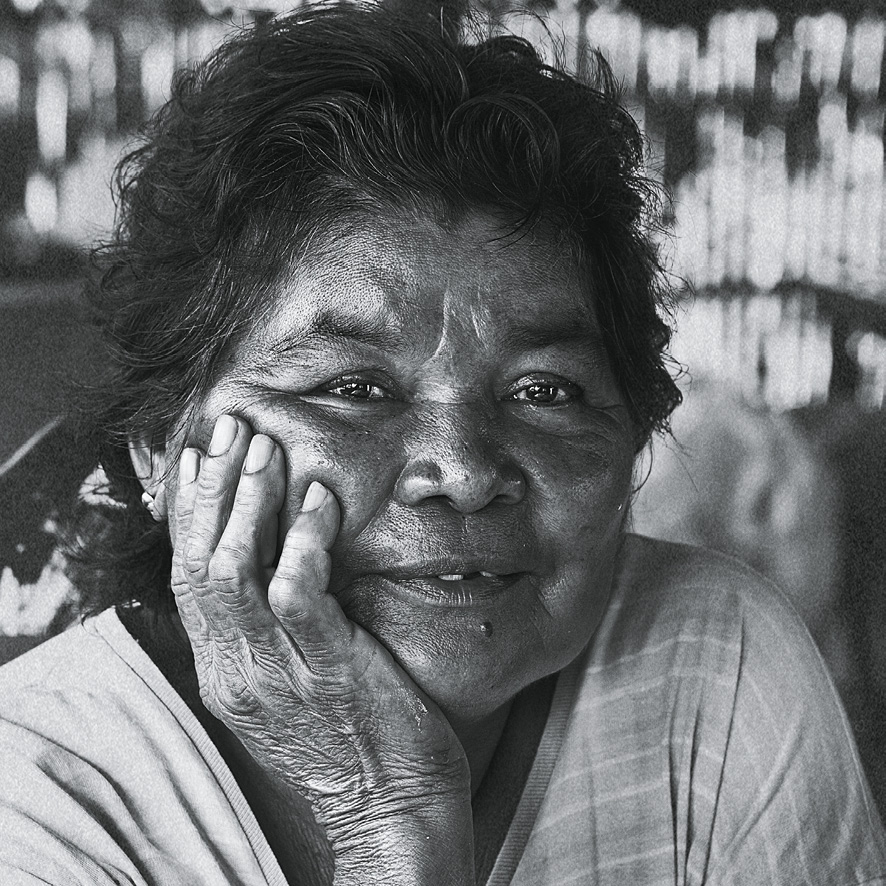
Violet James settled in Almond Beach in the 1980s when her husband undertook work as a sea turtle warden and conservationist. The small Almond Beach community sits at the northernmost point of the Shell Beach Protected Area, a 145 km stretch of coastland that is a vital nesting ground for four endangered marine turtle species. Of Violet’s seven children, three live abroad—a son and daughter live in the United States, and a daughter lives in Venezuela. Limited telecommunications at the remote Shell Beach location challenged Violet’s ability to keep in touch with her children, and she has heard from her daughter less in recent years as the situation worsened in Venezuela. She is proud that some of her children had the opportunity to leave Guyana but wishes she could speak with them more. While she doesn’t expect to see them regularly in the future, Violet expressed that even though migration places so much time and distance between them, she will continue to remain close with her children.
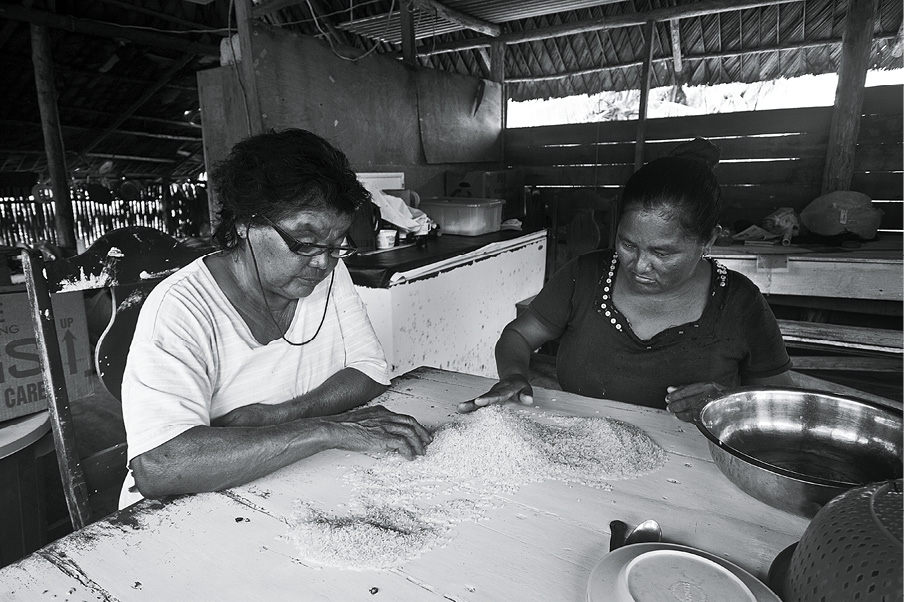
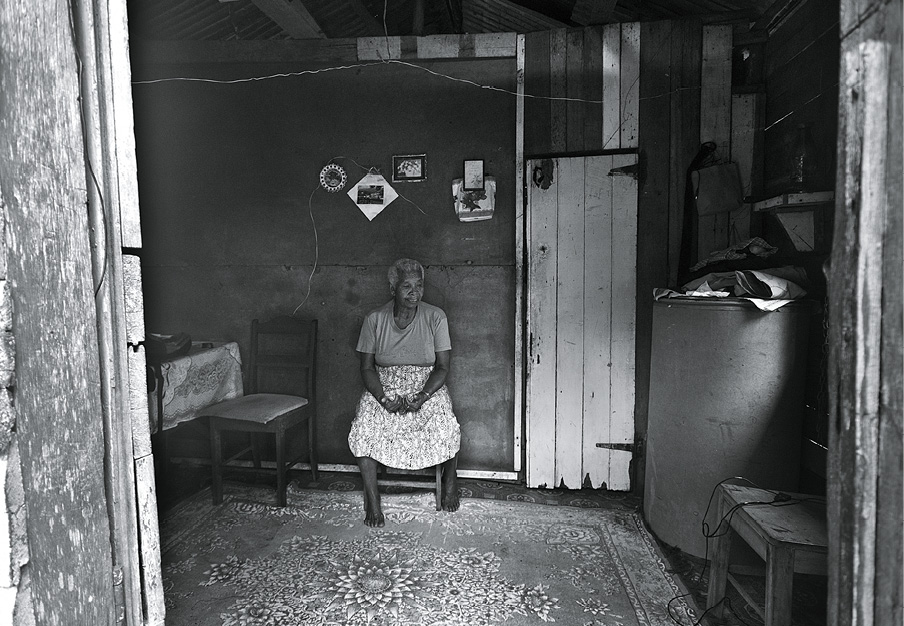
Surrounded by mementos in her living room, Lucille Beaton glances at the barrel sent by her son, who resides in Canada. Khadija Benn, Lucille Beaton, from the series Those Who Remain: Portraits of Amerindian Women, 2017, digital photography.
© Khadija Benn. Courtesy of the artist. CC BY-NC-ND.
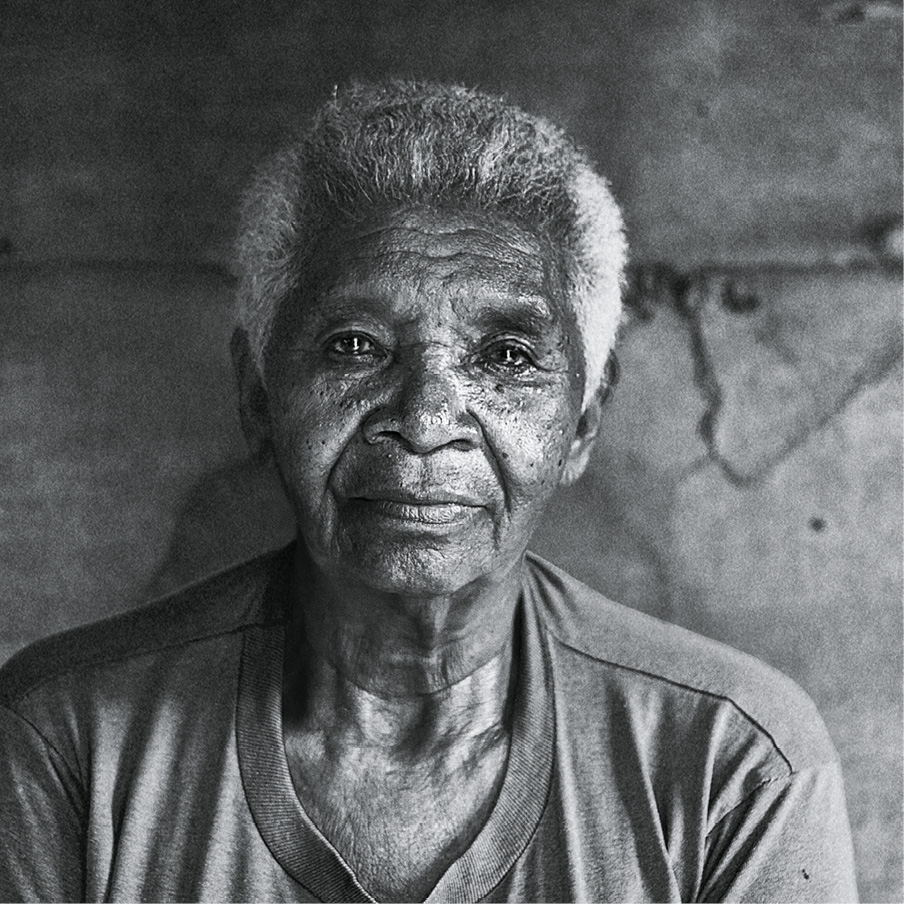
Lucille Beaton grew up at the Barama River mouth and eventually settled in Mabaruma, the northernmost town in Guyana. She spent most of her life fishing, farming, and raising her eight children. Most of her children still reside in Guyana, but she rarely sees them as their relationships have become strained over the years. Her closest bond is with one son who has lived in Canada for most of his adult life. Lucille was overjoyed when he had the opportunity many years ago to leave Guyana and make a better life for himself. Since leaving he has only visited home twice. She no longer remembers how much time has passed since he moved away, but she still misses him daily. He continues to support her, and they share regular phone calls. Alone in her simple wooden home, Lucille says she was never inclined to leave Guyana. She now occupies her days with activities for her church, where she has found solace and a deep sense of community.
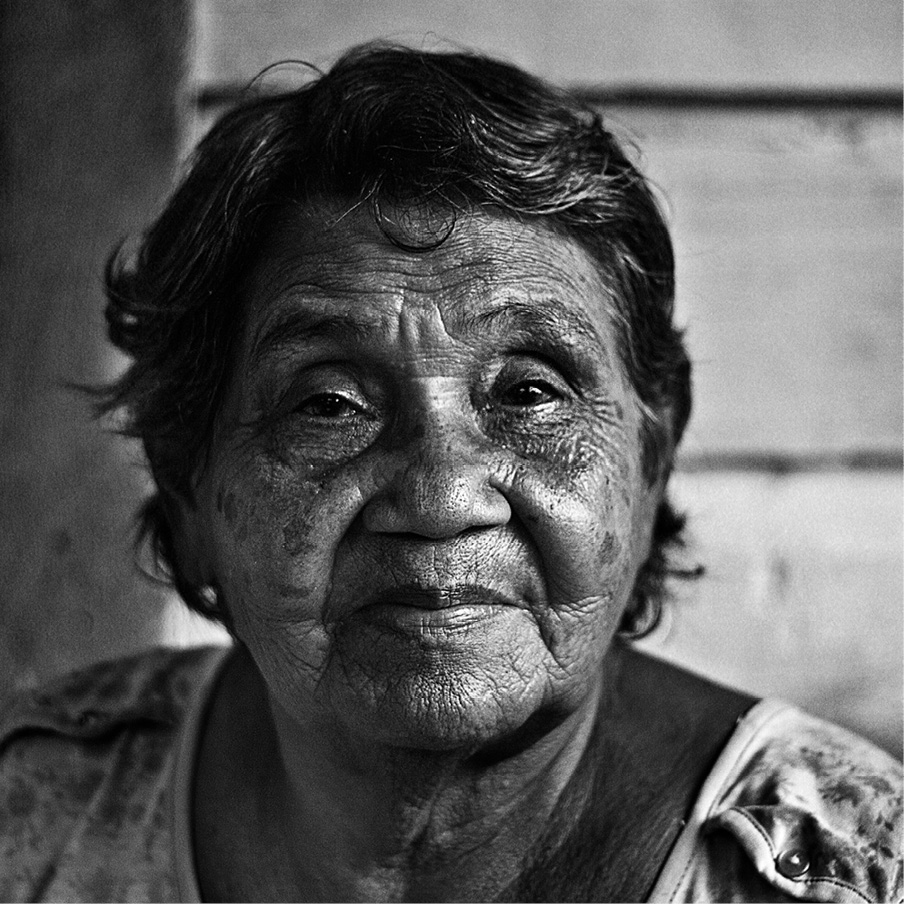
Agnes Phang was born in Mabaruma and has lived much of her life there. As a mother of fourteen children, her earlier days were spent subsistence farming and caring for her children. Many of them went on to raise their own families, some doing so further away than others. Agnes related how one of her daughters migrated to Venezuela more than thirty years ago. She has visited her daughter’s home a few times, but her grandchildren have never visited Guyana and she is unable to converse with them as they grew up learning Spanish. Agnes also has a sister living in England with whom she maintains a fond relationship. She has traveled to England several times to visit her, and her sister returns to Mabaruma about once a year to visit relatives and maintain the family property. Agnes says her travels to visit with family have allowed her to experience many interesting places, but she loves her home in Mabaruma above all others.
‘I never want to live anywhere else . . . but it would be nice to see how [my children] living now.’
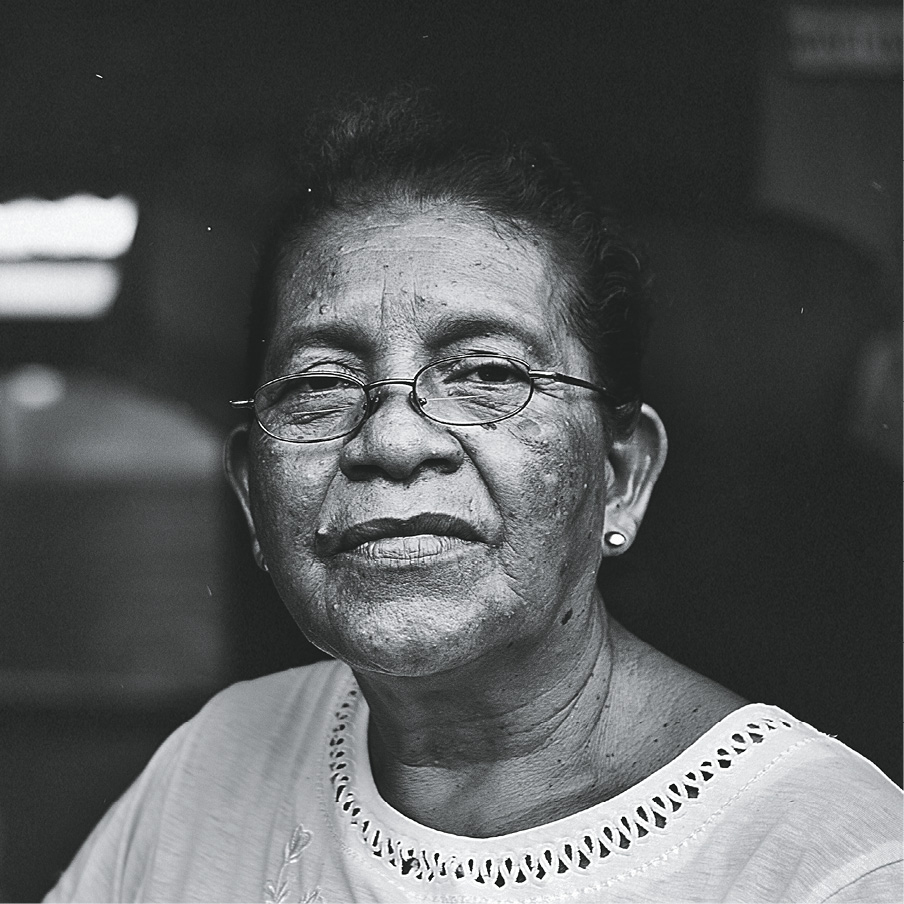
Yvonne Gomes grew up in Morawhanna, which was once a vibrant fishing and farming village situated near the Barima estuary. In the late 1980s frequent floods from increased tidal events forced her family to relocate to nearby Mabaruma where she attended primary school as a child. Thirty years on, Yvonne is a farmer, tailor, and mother to eleven children. Over time her family unit grew smaller as some children went in search of greener pastures. More than ten years have passed since one of her daughters left Guyana to work in Barbados, and three sons migrated to work in Canada, Venezuela, and Suriname. Yvonne understood they needed to leave to secure better jobs, but she says it was hard to watch them go. As they are seldom able to travel home, the family now relies on telephones to stay in touch. Yvonne is open to traveling someday to visit her family members; but as echoed by other women in this narrative, she knows no other home, and is content to spend her remaining years in Guyana.
